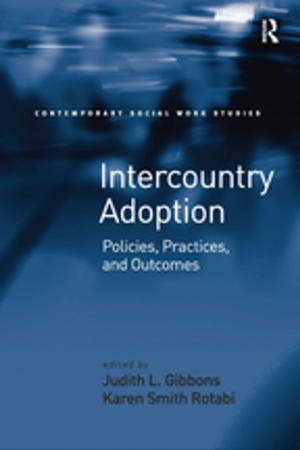Taming the Anarchy
Groundwater Governance in South Asia
Business & Finance, Economics, Economic Development, Nonfiction, Science & Nature, Nature, Environment, Ecology| Author: | Tushaar Shah | ISBN: | 9781136524028 |
| Publisher: | Taylor and Francis | Publication: | September 30, 2010 |
| Imprint: | Routledge | Language: | English |
| Author: | Tushaar Shah |
| ISBN: | 9781136524028 |
| Publisher: | Taylor and Francis |
| Publication: | September 30, 2010 |
| Imprint: | Routledge |
| Language: | English |
In 1947, British India-the part of South Asia that is today's India, Pakistan, and Bangladesh-emerged from the colonial era with the world's largest centrally managed canal irrigation infrastructure. However, as vividly illustrated by Tushaar Shah, the orderly irrigation economy that saved millions of rural poor from droughts and famines is now a vast atomistic system of widely dispersed tube-wells that are drawing groundwater without permits or hindrances. Taming the Anarchy is about the development of this chaos and the prospects to bring it under control. It is about both the massive benefit that the irrigation economy has created and the ill-fare it threatens through depleted aquifers and pollution. Tushaar Shah brings exceptional insight into a socio-ecological phenomenon that has befuddled scientists and policymakers alike. In systematic fashion, he investigates the forces behind the transformation of South Asian irrigation and considers its social, economic, and ecological impacts. He considers what is unique to South Asia and what is in common with other developing regions. He argues that, without effective governance, the resulting groundwater stress threatens the sustenance of the agrarian system and therefore the well being of the nearly one and a half billion people who live in South Asia. Yet, finding solutions is a formidable challenge. The way forward in the short run, Shah suggests, lies in indirect, adaptive strategies that change the conduct of water users. From antiquity until the 1960‘s, agricultural water management in South Asia was predominantly the affair of village communities and/or the state. Today, the region depends on irrigation from some 25 million individually owned groundwater wells. Tushaar Shah provides a fascinating economic, political, and cultural history of the development and use of technology that is also a history of a society in transition. His book provides powerful ideas and lessons for researchers, historians, and policy
In 1947, British India-the part of South Asia that is today's India, Pakistan, and Bangladesh-emerged from the colonial era with the world's largest centrally managed canal irrigation infrastructure. However, as vividly illustrated by Tushaar Shah, the orderly irrigation economy that saved millions of rural poor from droughts and famines is now a vast atomistic system of widely dispersed tube-wells that are drawing groundwater without permits or hindrances. Taming the Anarchy is about the development of this chaos and the prospects to bring it under control. It is about both the massive benefit that the irrigation economy has created and the ill-fare it threatens through depleted aquifers and pollution. Tushaar Shah brings exceptional insight into a socio-ecological phenomenon that has befuddled scientists and policymakers alike. In systematic fashion, he investigates the forces behind the transformation of South Asian irrigation and considers its social, economic, and ecological impacts. He considers what is unique to South Asia and what is in common with other developing regions. He argues that, without effective governance, the resulting groundwater stress threatens the sustenance of the agrarian system and therefore the well being of the nearly one and a half billion people who live in South Asia. Yet, finding solutions is a formidable challenge. The way forward in the short run, Shah suggests, lies in indirect, adaptive strategies that change the conduct of water users. From antiquity until the 1960‘s, agricultural water management in South Asia was predominantly the affair of village communities and/or the state. Today, the region depends on irrigation from some 25 million individually owned groundwater wells. Tushaar Shah provides a fascinating economic, political, and cultural history of the development and use of technology that is also a history of a society in transition. His book provides powerful ideas and lessons for researchers, historians, and policy















